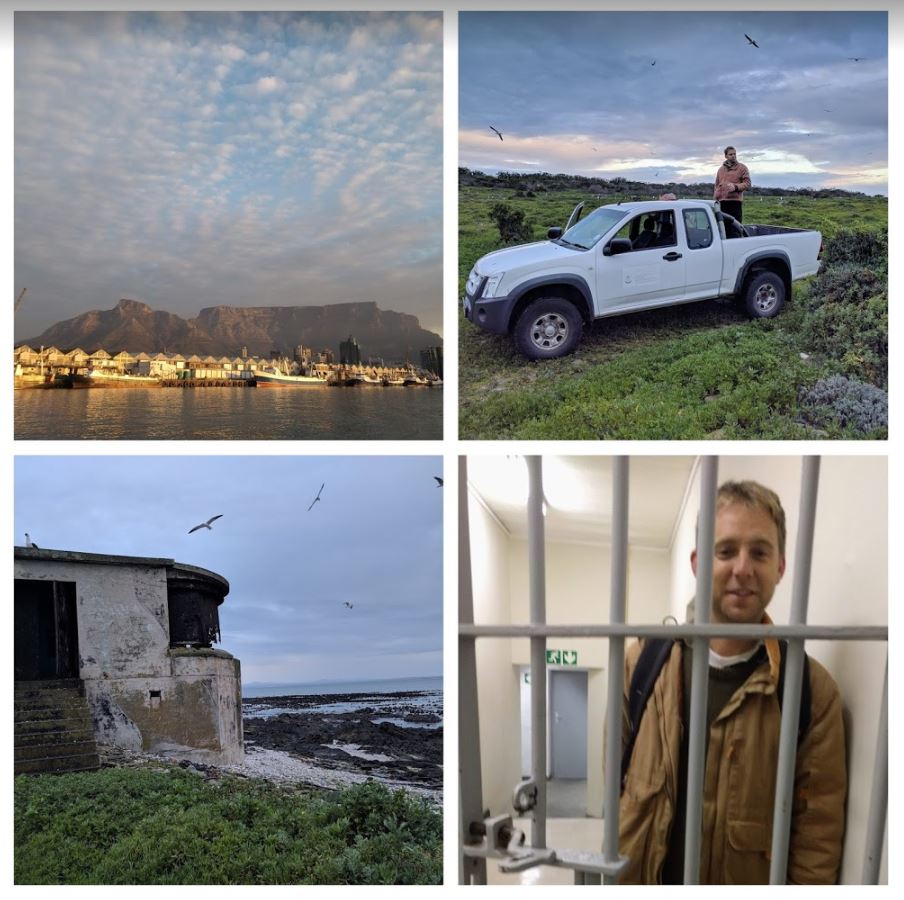A Night on Robben Island
Robben Island is known as the place where Nelson Mandela was incarcerated for 18 of the 27 years he spent incarcerated. But Robben Island, now a UNESCO World Heritage Site, has been used as a leper colony, an animal quarantine station and a prison island. During World War II, the island accommodated guns to sink potential invading ships.
Robben Island has amazing wildlife. Although named after a Cape fur seal colony, there are now only a few around. But there are lots of penguins (seemingly everywhere), seagulls and many other marine birds. As well as the amazing indigenous wildlife, Robben Island has a darker invasive side. The population of rabbits that once turned most of the island into a sandy desert have been reduced to a very few individuals (we didn’t see any), cats are nearly gone, but herds of fallow deer are still impacting what remains of the native vegetation.
From Top Left to Bottom Right: View of Table Mountain from the boat, doing another tour of the island but during the day, a WWII lookout installation, Ben behind bars for the night.
CIB visiting fellow Ben Allen and I were allocated a prison cell for the night to observe some of the animal control program in action. Ben has worked on control of mammals in Australia for many years, and he had some interesting ideas for helping to improve the control effort on Robben Island. The native birds and steenbok certainly make the control effort far more complex, but we believe that given appropriate effort to remove the last individuals, lasting control is possible.
Thanks to the Robben Island museum for making the trip possible.

